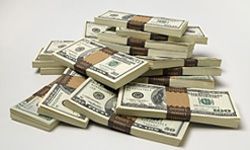Every three months, publicly held businesses go in for a financial check-up. As required by the Securities and Exchange Commission (SEC), every company that is traded on the stock market must file a quarterly balance sheet, earnings report and statement of cash flows. For investors, these reports hold critical information for gauging the financial health of a company and deciding whether to buy more stock or sell, sell, sell!
Earnings and cash flow are two very different ways of calculating the profitability of an enterprise. In fact, they're based on two distinct accounting methods: accrual accounting and cash accounting [source: Investopedia].
Advertisement
Earnings are calculated using accrual accounting, which indicates the company's profitability "on paper." In other words, a sale is counted as a sale as soon as the order is made, whether or not the client has actually paid for the order. Same for expenses; if a company owes money to suppliers, it counts as an expense even if the bill hasn't been paid. The danger of accrual accounting is that it leaves room for "creativity." Savvy accountants can inflate earnings that may or may not ever result in real cash.
That's why the statement of cash flows is so important. Cash flow doesn't concern itself with paper earnings and expenses. It relies on cash accounting, which only records revenue or expenses when the money changes hands. A statement of cash flows indicates how and when a company receives money (from sales, investments or financing) and how and when it spends money (operating expenses, capital investments, taxes, interest, etc.). The bottom line of a cash flow statement reveals how much money (as in real cash) a company has on hand to successfully run its operations, cover its liabilities and expand.
Businesses have several different ways to track and report cash flow, and smart investors need to understand the significance of each one. Keep reading as we break down the five ways that businesses measure cash flow.


